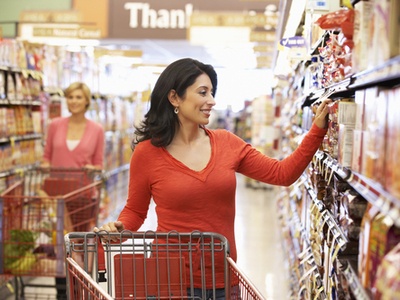Despite the growing popularity of online shopping, stores remain full with in-store customers who enjoy picking and choosing the items that they want to take home. Do they really pick and choose? That’s debatable. For decades, shops and supermarkets have studied consumer behavior to determine the best way to manipulate shoppers into buying more. Shopping has become similar to a Sloto Cash casino event with flashy displays, alluring graphics and the promise of valuable promotions that make the shopper choose more than s/he had originally wanted.
As the phrase “forewarned is forearmed” teaches, if we, as shoppers, know what to look out for, we’ll be more likely to bypass the glitz and other marketing come-ons and make sure that we don’t pay for items that we don’t really want or need.
Some ways that supermarkets use physical atmosphere to encourage buying include:
Layout
If you walk into a supermarket you’ll often notice that it’s arranged in a way that makes it difficult to find your way out once you’re in. The doors are one-way so in order to leave, you have to walk into the supermarket and make a loop around in order to go past the check-out counters and find the exit.
The placement of the various departments is also well orchestrated. The first department that you’ll likely see is the produce department with its display of colorful, delectable fruits and vegetables. The supermarket wants you to experience sensory overload with the wide selection of scents, textures and colors that inspire a happy (and hungry) feeling. Another department that is generally placed near the front is the bakery department – the store wants its customers to start out on their shopping adventure with the yummy smell of fresh-baked bread, cakes and cookies.
You can also often find buckets of flowers in this area as well that send a message that the store promotes fresh, fragrant, healthy and natural offerings.
Music
Music that accompanies the shopper through the aisles is nothing new but some stores are ratcheting up the use of audio to a whole new level by curating made-to-measure playlists. In order to create an experience, stores are learning that if they create the right visual, musical and scent atmosphere, customers stay longer and buy more. They have found that music helps determine a person’s mood and if they find tune the soundscape, they’ll ultimately see more sales.
Some stores are using the services of music concierge service to create an environment that keeps people shopping for longer periods of time. Music has become an increasingly powerful tool for retailers because it influences emotions. When music is curated between the brand, the audience and the business objectives, it becomes a vital tool in influencing consumer behavior and can even facilitate increased spending.
Professor Adrian North, head of the school of psychology and speech pathology at Curtin University in Australia has researched the relationship between behavior and music. He explains that music arouses the brain physiologically. “If you use music to make people more aroused they’ll act more quickly, they’ll eat more quickly. Other research shows that they’ll drink more quickly or walk around a shop more quickly whereas slow music will have the opposite effect.”
Touch
Store owners are discovering that they can use music to influence buying habits. Stores are actually very happy to have you touch the items because touching tends to lead to buying. Many stores create roadblocks that force customers to slow down – and while they are walking more slowly, they are more likely to pick items up.
Consumer consultants suggest that stores create displays that are a bit off-kilter because people will generally feel more comfortable picking things up if they aren’t arranged perfectly. This is especially true at the counters where people are forced to stand in place as they wait in line – that’s the area where you’ll see the most displays placed at eye level.
Memberships
Many stores invite customers to “join” to take out a “membership” which will “entitle” them to receive special discounts and coupons. In this way, the store makes them feel that they’re “joined” a club which inspires a sense of loyalty. In addition, this is a subtle way to encourage customers to spend the bonus increments with the store instead of with a competitor.
Stores that offer memberships appeal to a sense of cognitive dissonance by which people who have invested in a membership want to make that membership pay off by continuing to buy with that retailer.
Dining
Stores like Cosco and Ikea operate low-cost on-site dining spaces where people can treat themselves to a meal or a snack before they set out on their buying expeditions. Supermarkets generally like people to come in with an empty stomach which makes them do more impulse shopping but larger retailers have generally found that, when people are enjoying a general feeling of satisfaction and well-being, they tend to spend more money.
Mind Games
Stores know that customers are looking for good bargains so they use all sorts of strategies (some might call them “tricks”) to make you feel that you’re getting a special deal. They declare that items are on “sale” and warn you that the deals are “limited time offers.” Some stores have been known to pull a line of products off the shelves for a period of time so when it does return, there’s an atmosphere of “get it now.”
Many retailers have shopping carts at the front of the store so as you wander around the store, you’ll be inspired to fill up the cart. Supermarkets keep basics like milk and packaged bread in the back so you have to walk past all the other merchandise in order to get to those essential items.
Pricing
Stores are careful in how they write prices. The last dollar of the price is often written as cents (as in $9.99 instead of $10) because, for many shoppers, they see it as a dollar less. Items are often grouped so even though you end up paying the same price per item, you buy more (12 yogurts for $8), thinking that you’re getting a deal.
There’s something called “anchor pricing” in which similar items are placed next to each other, one with a more expensive price and the other with a cheaper price. A buyer may grab the cheaper item, thinking that it’s a bargain, when in fact, that was the price all along.
Finally, “Goldlocks pricing” happens when a store groups similar products in a group of three, with low, medium and high prices. The medium-priced item is made to seem like better quality than the lowest-priced one and a good deal compared to the more expensive one.
Knowing what’s going on behind the scenes gives you a more productive shopping experience.






